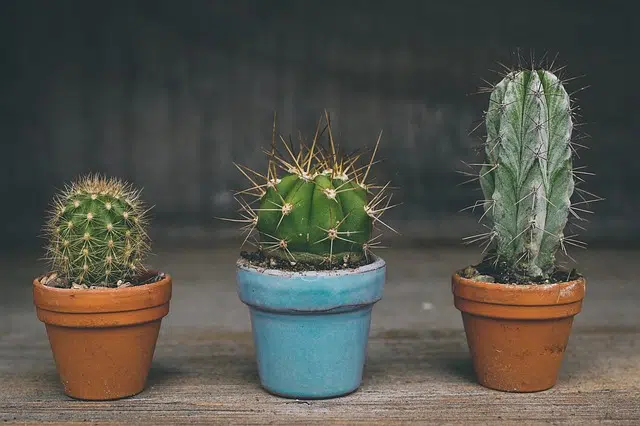
Cacti can survive in very dry environments.
The term cactus comes from the Latin language , although its etymological root is found in the Greek káktos . The concept refers to a plant that belongs to the Cactaceae family.
Cacti, also called cacti , are part of the group of succulents or succulents : plants that have a modified organ or sector to store a greater amount of water than other species can contain. This makes it possible for cacti to survive in desert regions with a very dry climate.
Characteristics of cacti
Originally from the American continent, cacti have spread throughout much of the planet. Cacti can be differentiated from other succulent plants by the presence of an areola , which is an axillary bud where spines grow. It should be noted that there are about two hundred genera of cacti with more than two thousand documented species: that is why there are cacti of multiple sizes and shapes.
In addition to the great variety that we can see in the physical appearance of cacti, we must point out that these plants have a truly admirable capacity for adaptation , since they have been able to go from life in the desert to fulfilling a purely ornamental function within the home. or in gardens in different parts of the world, with very different climates. The great versatility of the cactus is due in part to the fact that it does not require much attention or special care to survive.
Benefits of including it in the home
A detail that not many know about cacti is that they are capable of absorbing the radiation emanating from electronic devices, which is why their presence in the home is ideal for minimizing the damage caused by mobile phones, televisions and computers. , among other essential devices today.
In addition to this property and its ornamental function, the cactus provides different benefits to humans, which is why many people place it among their favorite plants. According to various studies, it is ideal for work environments because it reduces the likelihood of stress , and in classrooms because it increases the degree of concentration of students.

The different species of cacti belong to the group of succulent plants.
Cactus and humidity
Like any other plant, the cactus improves the quality of the air we breathe, and generates positive feelings in us, because contact with nature moves us in the depths of our being, where we have not looked for dozens of generations. A cactus in the home also serves to level the humidity of the air and purify it; This helps prevent dry skin, throat and mucous membranes, as well as irritation and cough.
In a similar way to what happens with humidity, plants absorb chemical elements harmful to our health and dust from the air. It is curious that the cactus has a threatening appearance, with immense thorns that make us feel danger, since it is a plant that is considerably beneficial for us. As in all cases, it is not a magic potion that can improve our lives in an instant; We must receive it at home in a genuine way so that it becomes part of our daily life in harmony.
Ornamental and food use
The development of the tissue known as parenchyma makes the stem of cacti thick. The shape of the stem can be cylindrical, spherical or flattened according to the species . The flowers of these plants, on the other hand, are usually hermaphrodites.
Currently many species of cacti are cultivated for ornamental purposes . Thus we can find cacti in gardens, parks and other open spaces: There are even cacti that can be grown indoors.
The fruit of certain species of cactus is known as nopal or prickly pear . This fruit, once the thorns and shell are removed, is edible. It is also used to make juices, jams and other food products .
